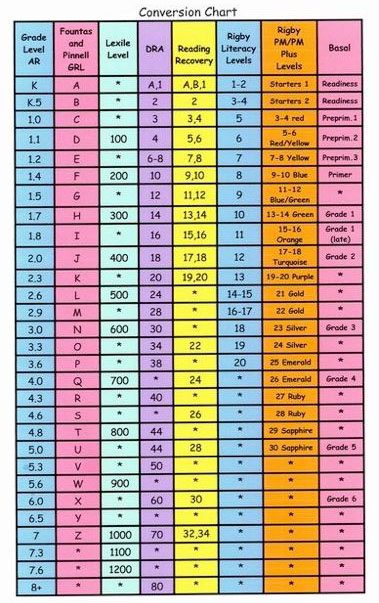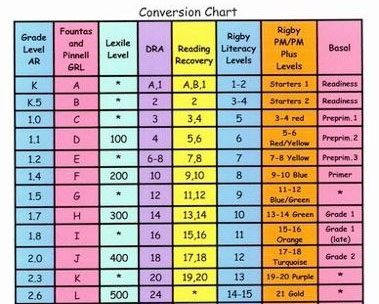A Conversion Chart For Reading Level Measurement Tools
by TeachThought Staff
If you’ve used AR (Accelerated Reader) as a reading motivation tool to set goals and track progress, you’re undoubtedly aware of its ability to assess general reading levels as well.
The problem is, measuring reading level is really outside of its sweet spot as a literacy tool, with better resources available from DRA, DIBELS, Lexile, Reading Recovery, and Rigby, among others. There is also the issue of availability, with most schools only using one or two of these tools, primarily in early elementary school. But what happens if you need to convert a general level from one program to another?
1. Lexile Framework for Reading
The Lexile Framework is the most commonly used tool in U.S. schools. It measures both text complexity and a student’s reading ability on the same scale.
Pros: Integrated into many platforms (e.g., MAP Growth, Achieve3000), easy to match books to student level
Cons: Doesn’t account for background knowledge or interest
Best for: Grades 2+, especially when used with adaptive assessments
2. Fountas & Pinnell (F&P)
This A–Z guided reading system uses teacher observation and running records.
Pros: Rich qualitative insight, great for small groups
Cons: Time-consuming and somewhat subjective
Best for: K–5 guided reading programs
3. DRA (Developmental Reading Assessment)
Pearson Assessments
DRA provides a reading level based on fluency, accuracy, and comprehension.
Pros: Thorough snapshots of reading behaviors
Cons: Requires individual testing time
Best for: K–3 diagnostic use
4. STAR Reading
Renaissance Learning: A computer-adaptive test that quickly identifies a student’s reading level and ZPD (Zone of Proximal Development).
Pros: Fast, scalable, data-rich
Cons: Less diagnostic depth
Best for: Benchmarking and screening in grades 2–12
5. i-Ready Reading Diagnostic
i-Ready.com: This adaptive test provides personalized insight into student reading ability and links directly to instructional content.
Pros: Detailed reports, integrated curriculum
Cons: Proprietary system; requires full buy-in
Best for: Schools using i-Ready across subjects
6. Reading A–Z and Raz-Kids
These programs assign students leveled readers and allow for ongoing reading assessment.
Pros: Huge digital library, built-in quizzes
Cons: Leveling doesn’t always align with other systems
Best for: Daily reading practice and progress monitoring (Grades K–5)
7. Informal Reading Inventories (IRIs)
Varies by publisher—examples include Qualitative Reading Inventory and Basic Reading Inventory
Pros: Teacher-led, provides rich insight
Cons: Not standardized, takes time
Best for: Individual diagnosis and conference-based instruction
A Conversion Chart For Reading Level Measurement Tools

A Conversion Chart For Reading Level Measurement Tools
You Might Also Like
Should AI Chatbots Help Students With Their Mental Health?
Alongside has big plans to break negative cycles before they turn clinical, said Dr. Elsa Friis, a licensed psychologist for...
Strict Rules Can Foster Calm Classrooms. But Some Students Pay the Price
To his mom, when her son gets suspended from school and sent home, it feels like the school is ignoring...
Some Social Emotional Lessons Improve How Kids do at School, Yale Study Finds
Cipriano also directs the Education Collaboratory at Yale, whose mission is to “advance the science of learning and social and...
What Every Parent Should Know About Online Gambling
Since the U.S. Supreme Court removed the legal barriers that had prohibited states from allowing gambling, some 31 now permit...










